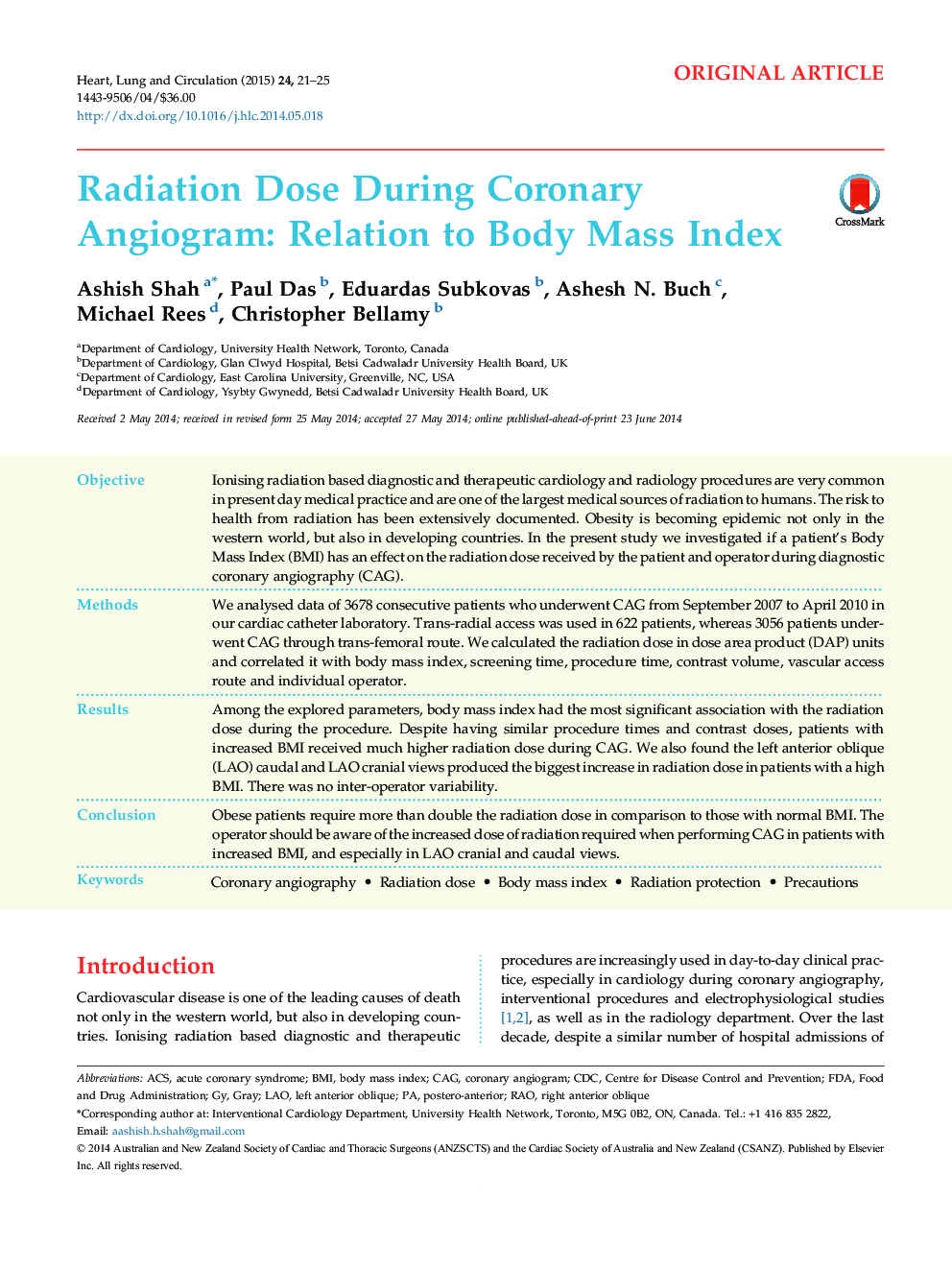| Article ID | Journal | Published Year | Pages | File Type |
|---|---|---|---|---|
| 2918262 | Heart, Lung and Circulation | 2015 | 5 Pages |
ObjectiveIonising radiation based diagnostic and therapeutic cardiology and radiology procedures are very common in present day medical practice and are one of the largest medical sources of radiation to humans. The risk to health from radiation has been extensively documented. Obesity is becoming epidemic not only in the western world, but also in developing countries. In the present study we investigated if a patient's Body Mass Index (BMI) has an effect on the radiation dose received by the patient and operator during diagnostic coronary angiography (CAG).MethodsWe analysed data of 3678 consecutive patients who underwent CAG from September 2007 to April 2010 in our cardiac catheter laboratory. Trans-radial access was used in 622 patients, whereas 3056 patients underwent CAG through trans-femoral route. We calculated the radiation dose in dose area product (DAP) units and correlated it with body mass index, screening time, procedure time, contrast volume, vascular access route and individual operator.ResultsAmong the explored parameters, body mass index had the most significant association with the radiation dose during the procedure. Despite having similar procedure times and contrast doses, patients with increased BMI received much higher radiation dose during CAG. We also found the left anterior oblique (LAO) caudal and LAO cranial views produced the biggest increase in radiation dose in patients with a high BMI. There was no inter-operator variability.ConclusionObese patients require more than double the radiation dose in comparison to those with normal BMI. The operator should be aware of the increased dose of radiation required when performing CAG in patients with increased BMI, and especially in LAO cranial and caudal views.
